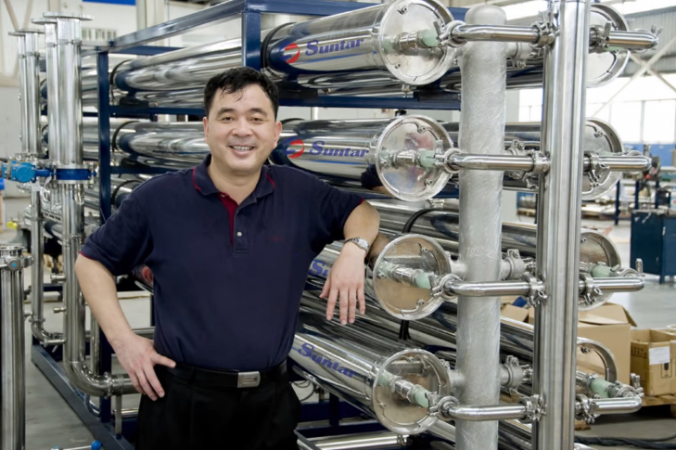
Singapore: Lan Weiguang took a leap of faith to test out her technology because she was so confident it would work.
LAN is a leader in membrane technology, and its systems are now used worldwide to purify industrial wastewater of heavy metals and convert it to potable water.
However, his method was not tested outside his Singapore lab in 1997.
"In the lab, I showed it was effective. But without reassuring pilot test results, customers would not trust the product," he said.
Without my wife's consent, I withdrew money from my joint account to pay for the machine. She was furious because the savings were for our own home improvements.
However, the pilot-scale experiment would not be able to continue if I did not buy the machine.
The investment was profitable, and LAN's technology became essential to initiatives such as Neuater, facilities that purify the water used in Singapore to create safe drinking water.
This strategy fits into Lan's larger quest to find practical uses for science.
The scientist-entrepreneur said the secret to his success was to go beyond research and development and bring scientific concepts from laboratories to a new plant for his company Suntar in Tuas, Singapore's western industrial district.
R&D is insufficient. According to Lan, scientists need a platform to convert discoveries from their research into commercial products and applications.
"The Chinese scientific community provides scenarios for real-world application, while the Singaporean scientific community is strong in developing theories and technologies," he said. When engineering and science come together, sparks fly.
Growing up in southeast China, Lan graduated from the chemistry program at Xiamen University in 1985. He then moved to Singapore on a scholarship to pursue a doctorate in Advanced Water Membrane Technology and became a citizen.
He maintained ties with his alma mater in Xiamen and was given a professorship in 1999 before taking over as director of the Center for Applied Membrane Technology.
He founded Suntar in Singapore in 1996, with manufacturing facilities in Xiamen. At the end of 2019, Suntar became the first membrane technology company to be listed on the Science and Technology Innovation Board of the Shanghai Stock Exchange.
The complex process of producing the antibiotic ampicillin from salt lakes and extracting lithium, a metal needed for renewable energy, also uses the technology in addition to improving wastewater.
According to Lan, membrane filtration systems were also used in nuclear power plants including Tianwan, Jiangsu Province and Qinshan, Zhejiang Province.
They claimed that the system placed essential boric acid, which has chemical and physical properties similar to dissolved silicon, while removing dissolved silicon that can accumulate and interfere with plant operations.
The company claims that the largest market for membrane technology is still water treatment. It manages more than 30 wastewater treatment facilities in eight provinces in eastern China, contributing to the daily processing of more than 1 million tons of water.
In May of this year, Lan proposed that a team in Singapore, which would validate the performance of the new material, and a team in Xiamen to join together to launch an industrial production line of graphene composite membranes for water purification and wastewater treatment. Will work
According to the researchers, the inclusion of graphene, a very thin layer of carbon in the membrane, has the potential to increase their effectiveness and longevity as it slows down the clogging of the pores.
Lan said, I use market challenges as research topics and help industries find solutions.
More pirate incidents in the Singapore Strait are expected this year
Singaporean man charged with killing his wife with a pillow
Kejriwal could not go to Singapore, Delhi govt anoints Centre responsible